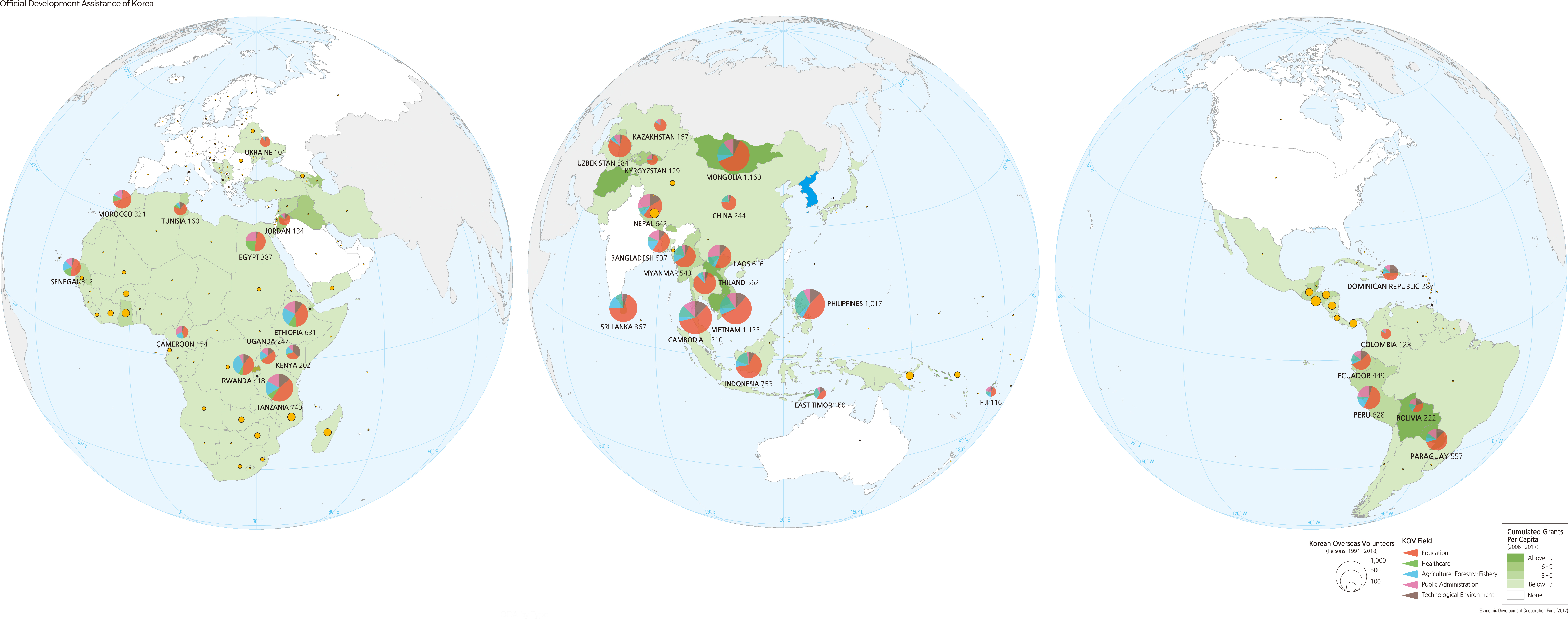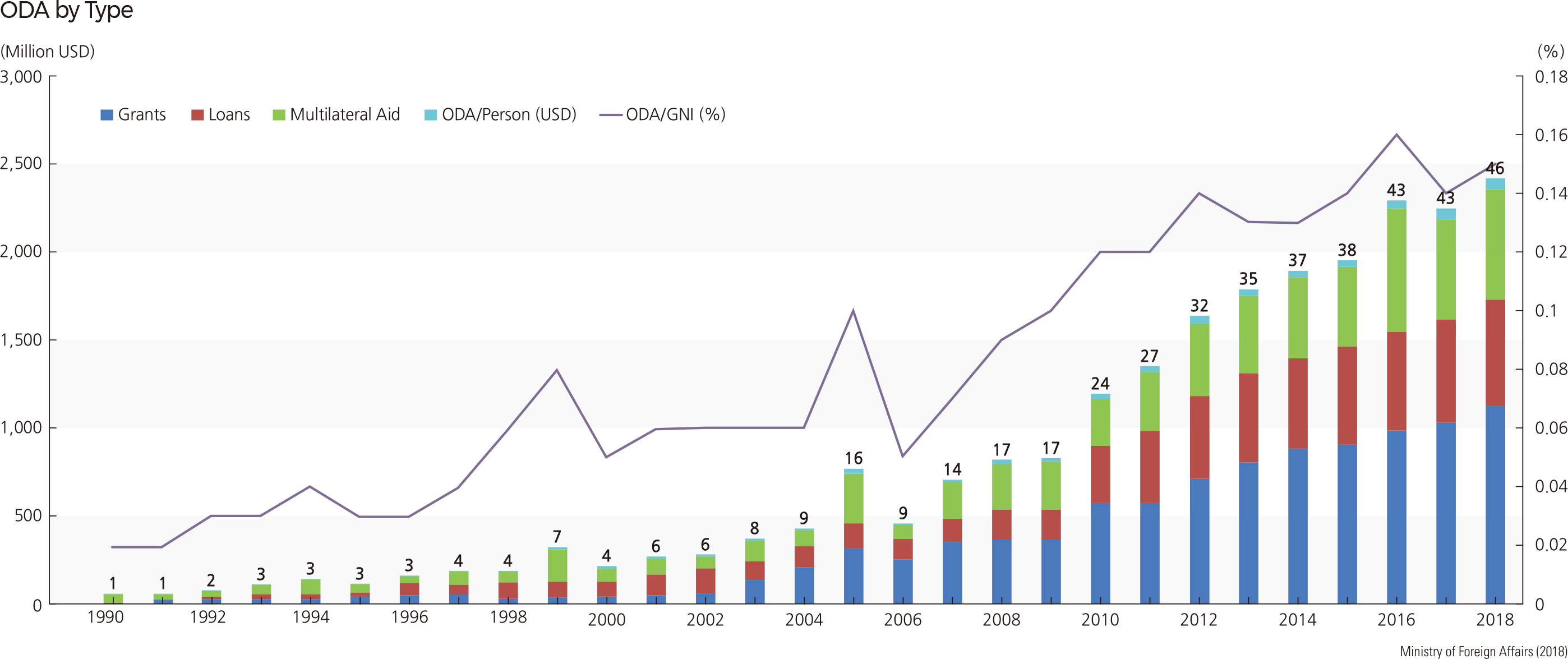English I 2019
As the international reputation of Korea continues to grow, the Korean government continues to play active roles on the world stage. Even though colonization and war pushed the nation to the periphery for the first half of the 20th century, Korea rapidly emerged to distinguish itself as an economically stable democracy. One truly symbolic event that highlights Korea’s emergence in world affairs was the 1988 Seoul Olympic Games. Another benchmark accomplishment is Korea’s membership in the Organization for Economic Cooperation and Development (OECD) in 1996. Korea’s development path is quite different from those of many other western countries, and it may serve as a role model for many of today’s developing countries.
In terms of international development cooperation, Korea has been a recipient country for over 40 years. The government received KRW 1,270 million in aid to promote industrialization after the Korean War. The aid was reduced as the economy grew and foreign capital from developed countries was attracted to Korean investments. As a result, Korea was formally removed from the list of recipient countries by the World Bank (WB) in 1995 and the list of recipients of the Development Assistance Committee (DAC) in 2000.
Korea’s participation in international cooperation and development has been visible since the late 1980s. The Korean government established the Economic Development Cooperation Fund (EDCF) in 1987 to offer international loans. In 1991, the Korea International Cooperation Agency (KOICA) was set up to provide grants and volunteers for a wide range of collaborative projects worldwide. Korea also joined the Development Assistance Committee (DAC) in the OECD in January 2010, strengthening its role as an active donor to global development. Specifically, Korea’s official development assistance is both bilateral and multilateral. Korean Overseas Volunteers have been dispatched to many parts of the world. Thus far, Korea’s effort to provide international assistance has focused on the following regions: Asia, the Middle East, Eastern Europe, the Commonwealth of Independent States (CIS), Africa, and Latin America.
The Official Development Assistance (ODA) of the Korean government provides grants or loans for promoting economic development and welfare of developing countries on concessional terms. Korea, as a member of the Development Assistance Committee (DAC) of the OECD, has provided grants and loans to many developing countries all around the world.
The map shows the cumulative amount of Korea’s grants from 2006 to 2017, normalized by the population of the receiving country. It also shows the number of Korean volunteers and the sector in which they are engaged within each country. Many volunteers at present are involved in education, agriculture, fisheries, and public health.
The graph presents the ratio of ODA to Gross National Income (GNI). We can see that the ratio has increased continuously since 1990. An exceptionally high value is observed in 2005 due to the tsunami disaster in South Asia. The ODA per capita shows how much an individual in the donor country pays for ODA. Korea’s ODA per capita was just USD 1 in 1990 but dramatically increased to USD 46 in 2018.
The ODA may be classified into two categories: bilateral and multilateral. Bilateral assistance can be further divided into grants with 100% donation and loans with a grant rate of 25% or more but less than 100%. Multilateral assistance is subdivided into loans, contributions, and concessional loans. The graph shows that Korea has increased assistance in all types of ODA. Bilateral aid, which was USD 12 million in 1990, was about USD 1.73 billion in 2018, and multilateral aid, which was USD 49 million, surged to roughly USD 620 million in the same period. For reference, in 2018, the ratio of grants to loans in the bilateral aid was two to one. All in all, the data shows that Korea has expanded its role as an active donor for global development. |

